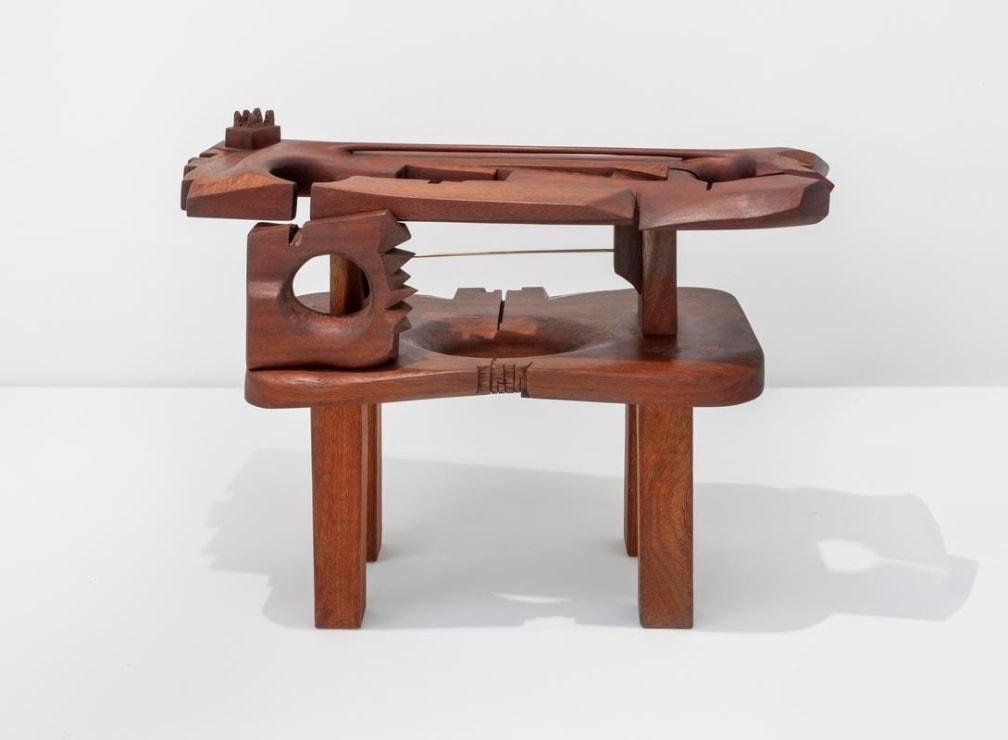
On the surface, it looks like a conspiracy. Although surprisingly little has been written about sculptor Chaouki Choukini’s five-decade practice, all narratives plot the same story. The clichés gang up on him, perpetually tracing his inspiration back to the sun-drenched hills of a native Lebanese landscape. As if hell-bent on unearthing some Freudian eureka moment, the analyses equate his genesis as a sculptor with a childhood drive to craft his own wooden toys. The more lyrical yarns spin his journey to Japan as a spiritual reckoning with a ceremonious culture deeply reverent of wood. Still others endow him with shamanistic qualities, or frame him, chisel in hand, performing sculptural hermeneutics, releasing a poetic code recessed deep into the timber.
Let’s try another reading. Choukini is a body, not a biography. As a body, he occupies a space. He stands, a fleshy counterweight to the sinuous, hewn wood before him. He is not circumspect: he knows the wood. He sees into its pores and fibres; he guesses its knots and crevices. In an era with a taste for object-oriented ontology and heightened relations with the “non-human,” it would be tempting to cast Choukini as somehow symbiotic with the cleft wedge of wenge. Or, at the very least, complicit with it.
This complicity—his will and skill to act with his material—forces us to reinterpret not only the canonical sculptor/material, creator/artwork power dynamic, but also the language in which such potentialities are analysed. We can speak, for example, of a blurring of matter and spirit in the sculptural gesture. We can ascribe corporality and will to materials. And we can perhaps begin to understand that it is less the idea of intellectually articulating a landscape, an anatomy, a machine that solidifies the creation, but rather that fragile moment of direct touch, of material bodies rubbing surfaces and sharing energy flows, that truly predestines a form.
There is something spectral about Choukini. In the annals of art history, he is recorded yet invisible. He is a monstre sacré who remains unknown to most. His worldview is wildly consistent—from his early horizontal Lieux to his recent bulbous totems—but scholarship is uneven. And for a sculptor touted as a poet of light, he is tantalizingly dark.
Choukini merits a new reading, and there is substantial material to reinvigorate our appreciation of his work. The time has come to liberate his practice from the clichés in which it has been unfairly mired.
Text by Kevin Jones